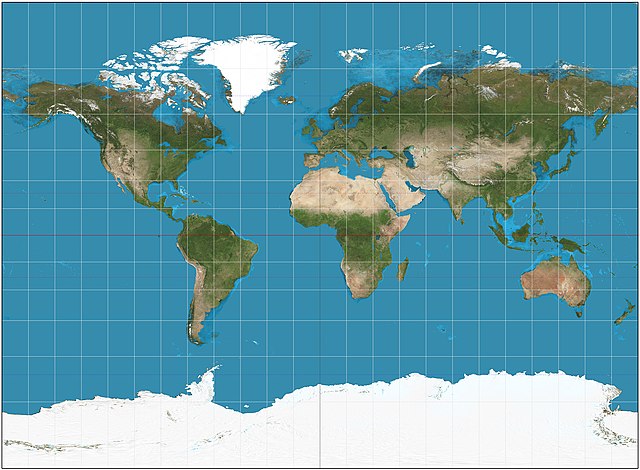Top Qs
Timeline
Chat
Perspective
Miller cylindrical projection
Cylindrical compromise map projection From Wikipedia, the free encyclopedia
Remove ads
The Miller cylindrical projection is a modified Mercator projection, proposed by Osborn Maitland Miller in 1942. The latitude is scaled by a factor of 4⁄5, projected according to Mercator, and then the result is multiplied by 5⁄4 to retain scale along the equator.[1] Hence:


or inversely,
where λ is the longitude from the central meridian of the projection, and φ is the latitude.[2] Meridians are thus about 0.733 the length of the equator.
In GIS applications, this projection is known as: "ESRI:54003"[3] and "+proj=mill".[4]
Compact Miller projection is similar to Miller but spacing between parallels stops growing after 55 degrees.[5]
In GIS applications, this projection is known as: "ESRI:54080" and "+proj=comill".[6]
Remove ads
See also
References
External links
Wikiwand - on
Seamless Wikipedia browsing. On steroids.
Remove ads

![{\displaystyle {\begin{aligned}x&=\lambda \\y&={\frac {5}{4}}\ln \left[\tan \left({\frac {\pi }{4}}+{\frac {2\varphi }{5}}\right)\right]={\frac {5}{4}}\sinh ^{-1}\left(\tan {\frac {4\varphi }{5}}\right)\end{aligned}}}](http://wikimedia.org/api/rest_v1/media/math/render/svg/448dd8b80e38c444b174e3399065fc9f9d7ebe3e)
